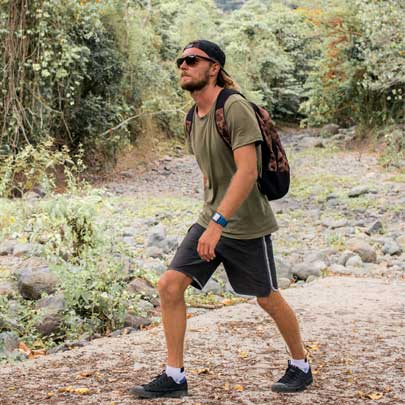Preserving Paradise: Sustainable Practices And Initiatives At Pilibhit Tiger Reserve
Sustainable practices and initiatives at Pilibhit Tiger Reserve are crucial for the conservation of its rich biodiversity and ecological integrity. Located in the state of Uttar Pradesh, India, Pilibhit Tiger Reserve is known for its dense forests, diverse wildlife and critical tiger habitat. To ensure the long-term protection of this valuable ecosystem, the reserve has implemented various sustainable practices and initiatives. Let's delve into detail about these efforts:
1. Community Engagement and Empowerment:
- Local Participation: Pilibhit Tiger Reserve actively involves local communities in conservation efforts. Community-based conservation programs empower residents to become stewards of their natural heritage.
- Livelihood Support: Initiatives such as eco-development projects, sustainable agriculture practices and alternative livelihood opportunities provide economic incentives for local communities to engage in conservation.
- Awareness Campaigns: Education and awareness programs raise community consciousness about the importance of wildlife conservation and foster a sense of ownership and responsibility.
2. Biodiversity Monitoring and Research:
- Scientific Studies: Pilibhit Tiger Reserve conducts biodiversity surveys, population monitoring and ecological research to understand the dynamics of its flora and fauna.
- Data-driven Conservation: Research findings inform conservation strategies and management decisions, ensuring that interventions are based on scientific evidence.
- Collaborative Research: Collaboration with research institutions, universities, and conservation organizations strengthens research capacities and facilitates knowledge exchange.
3. Habitat Restoration and Management:
- Ecosystem Restoration: Pilibhit Tiger Reserve implements habitat restoration projects to rehabilitate degraded areas and improve habitat quality for wildlife.

- Invasive Species Control: Efforts are made to control invasive species that threaten native flora and disrupt ecosystem balance.
- Fire Management: Fire prevention and control measures are implemented to reduce the risk of wildfires and protect sensitive habitats.
4. Anti-Poaching Measures:
- Law Enforcement: Anti-poaching patrols, ranger training programs, and intelligence gathering are employed to combat poaching and illegal wildlife trade.
- Technological Solutions: Modern technologies such as camera traps, GPS tracking and drones are utilized for monitoring and surveillance, enhancing law enforcement capabilities.
- Collaboration with Authorities: Collaboration with law enforcement agencies and wildlife authorities strengthens anti-poaching efforts and improves enforcement outcomes.
5. Sustainable Tourism Practices:
- Eco-tourism Guidelines: Pilibhit Tiger Reserve promotes responsible tourism practices that minimize environmental impact and respect wildlife.

- Visitor Management: Visitor carrying capacities, guided tours and interpretation programs ensure that tourism activities are sustainable and do not disturb wildlife.
- Revenue Generation: Revenue generated from eco-tourism activities is reinvested into conservation programs, contributing to the long-term sustainability of the reserve.
6. Water Resource Management:
- Watershed Protection: Watershed management programs protect water sources, prevent soil erosion and maintain hydrological integrity.
- Wetland Conservation: Wetland habitats are conserved and restored to support biodiversity and provide crucial ecosystem services.

- Human-Wildlife Conflict Mitigation: Measures are taken to address human-wildlife conflicts related to water scarcity, including waterhole management and community-based water resource management initiatives.
7. Climate Change Adaptation:
- Resilience Building: Pilibhit Tiger Reserve implements climate change adaptation measures to enhance ecosystem resilience and adaptive capacity.
- Reforestation and Carbon Sequestration: Reforestation projects, carbon sequestration initiatives, and sustainable land-use practices contribute to climate change mitigation efforts.
- Community Resilience: Community resilience programs help local communities adapt to climate change impacts and build sustainable livelihoods that are less vulnerable to environmental risks.
8. Education and Outreach Programs:
- Environmental Education: Environmental education programs engage schools, colleges, and local communities in learning about wildlife conservation and sustainable living.
- Capacity Building: Training workshops, awareness campaigns, and skill-building initiatives enhance local capacities for conservation stewardship and natural resource management.
- Public Outreach: Outreach events, nature camps, and interpretive tours raise public awareness about the importance of biodiversity conservation and inspire action for environmental protection.
9. Collaborative Partnerships:
- Multi-stakeholder Collaboration: Pilibhit Tiger Reserve collaborates with government agencies, non-governmental organizations (NGOs), research institutions and local stakeholders to implement conservation projects.
- Public-Private Partnerships: Public-private partnerships mobilize resources, expertise and community participation to achieve shared conservation goals and objectives.
- Networking and Advocacy: Participation in regional and international networks strengthens partnerships, promotes knowledge sharing and advocates for policy reforms to support conservation efforts.
10. Monitoring and Evaluation:
- Monitoring Systems: Pilibhit Tiger Reserve establishes monitoring systems to track progress, assess impacts and evaluate the effectiveness of conservation interventions.
- Adaptive Management: Data-driven decision-making and adaptive management practices enable the reserve to adapt strategies and adjust management actions based on changing circumstances and new information.
- Performance Indicators: Key performance indicators and benchmarks are used to measure conservation outcomes, monitor trends and demonstrate accountability to stakeholders.
By implementing sustainable practices and initiatives, Pilibhit Tiger Reserve aims to safeguard its natural resources, protect biodiversity and promote harmony between humans and nature. These efforts not only ensure the conservation of the reserve's ecological heritage but also contribute to the well-being of local communities and future generations.












































































